The stunning 20,500m2 building opened its doors last month
Heritage classics, New World of Volvo in Gothenburg is rather more than your everyday car museum. We drop by
When fighting to attract tourists, it never hurts to have a world. Birmingham has Cadbury World. Orlando, Florida, has Disney World. The New Forest has Peppa Pig World. Countless dismal retail parks across the country have World of Leather.
Until now, Gothenburg offered some lovely historical buildings and museums, Scandic scenery and even a century-old theme park. But it didn’t have a world. But now, visitors to the Swedish city can immerse themselves in a whole new tourist attraction. Welcome to the World of Volvo.
Gothenburg has been home to Volvo since 1927, but the main headquarters have been located around eight miles from the centre of the city in Torslanda.
That was where, until late last year, you would have found the Volvo Museum. This brought together vehicles from both the car company and the Volvo Group, which has been a separate entity since the Cars division was sold to Ford in 1999.
That site has now been closed, with key models from both firms’ heritage fleets rolled into a well-curated display at the heart of the facility. But World of Volvo isn’t just about looking back: the firm didn’t spend what are rumoured to be eye-wateringly vast sums on a new museum building.

Instead, it has been designed to be an ever-evolving attraction that looks to where both firms are heading in the future: a meeting place that offers plenty of omtanke – a space for care and consideration.
“Volvo has been in Gothenburg, but we’ve always lived in a different part of the city,” says World of Volvo boss Magnus Wrahme. “This is the first time we have moved into the city centre, to open up the brand to a much broader audience. The aim is to make sure that you can taste and feel and get a sense of where the brand is actually heading.”
But before we get to Volvo’s past, present or future, let’s take a moment to experience the building. Designed by Henning Larsen Architects, it’s a vast, round, open space, with three large tree-like cross-laminated timber supports rising from a Scandinavian concrete floor, before spanning out to form a vast canopy.
Large windows let in huge amounts of light, in both the large atrium on the entrance floor and throughout the five levels of exhibits. It’s all thoroughly modern, and very Swedish.
The World of Volvo building is free to enter, giving access to event spaces, an exhibition centre that can house more than 1000 people and a restaurant. “The freedom to roam is really important in Swedish culture,” says Wrahme. “We want this to be a vibrant destination and a place to visit. I wouldn’t say like the Eiffel Tower in Paris, but of course we like people. We want this to be a place you need to visit if you come to Gothenburg.”
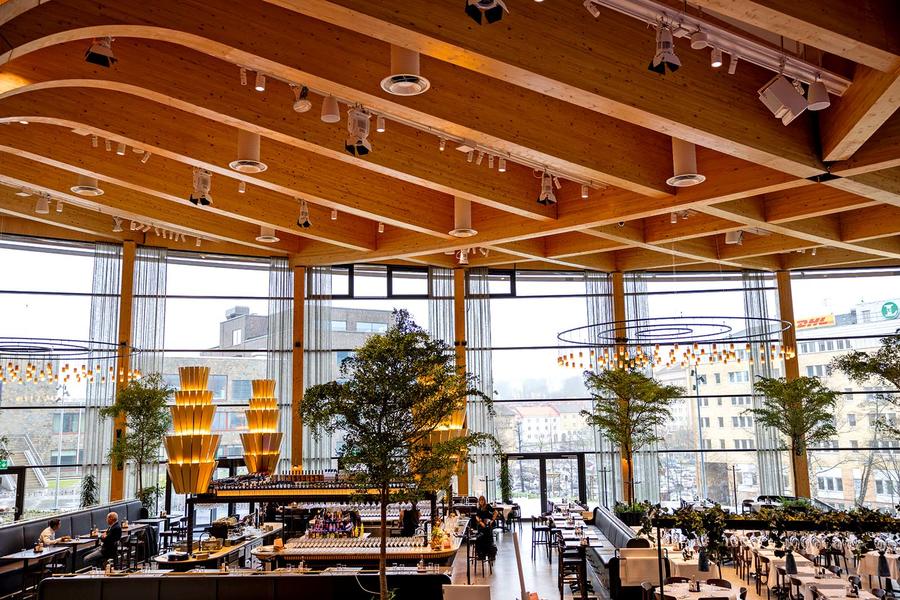
You will, though, need to buy a ticket for the exhibits. And when you do, the journey doesn’t start with the car display (we will come on to that), but with a series of interactive features – many of which focus, naturally, on safety and sustainability. Don’t worry: it’s more fun than that sounds.
There are exhibits showing how Volvo has developed new safety systems and techniques, from the seatbelt to crash test dummies.
In one notable section, you walk past portraits of people whose lives were saved by seatbelts, with audio recounting their stories. Another recaps the history of the lambda sensor, while you can also test your balance as a standing passenger on a bus simulator.
Another exhibit features a cartoonish driving sim designed to warn of the perils of distracted driving, where a character demands you conduct tasks on a large touchscreen while controlling the vehicle at speed (there’s a moral there somewhere). You can also rummage through a ball pool with some electric diggers or experience a wind tunnel.
Other exhibits are more ethereal: one art piece uses a giant curved screen that generates shapes and visual effects based on your movement, and I promise it’s way better than that description makes it sound.
“We want to show the visitors that Volvo is broader than just vehicles,” says Wrahme. “The brand is very human-centric, so it’s about how we can use technology in a way that can help people.”
Cars featured in the World of Volvo museum
Volvo OV4 (1927-1929)
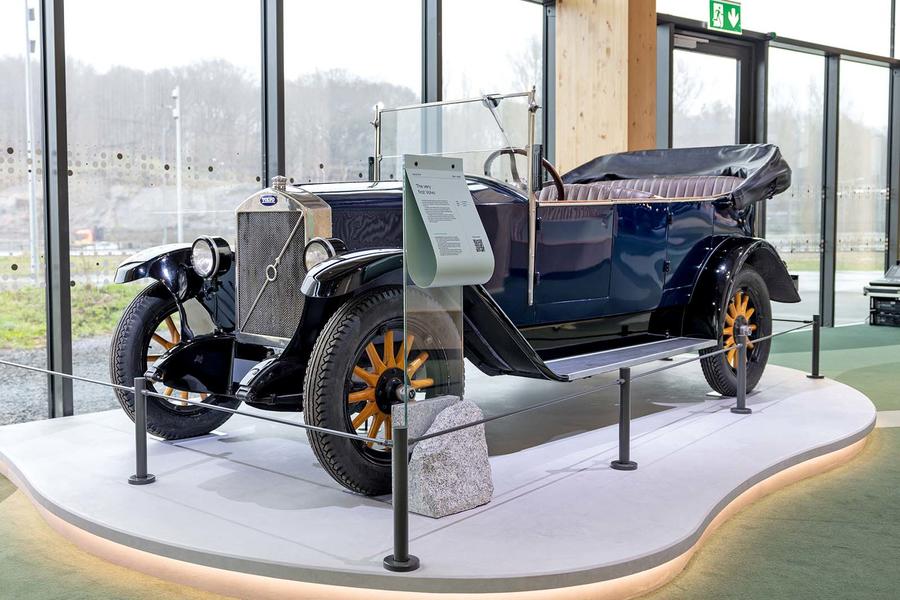
This is Volvo’s first car. The first 10 examples of the OV4 (Oppen Vagn translates as open carriage, four refers to the number of engine cylinders) were built in Stockholm before the company moved to Gothenburg.
The launch didn’t go well: the rear axle gear was installed incorrectly in the show model, so it could only run in reverse for its first test drive. Customers were also hesitant to buy an open vehicle in Sweden, especially given the high asking price, which set a trend: Volvo wouldn’t actually make any profit from its cars until the 1940s – hence why you can’t tell the history of Volvo Cars without the Volvo Group commercial vehicles that initially drove profits.
Volvo LV4 (1928-1929)
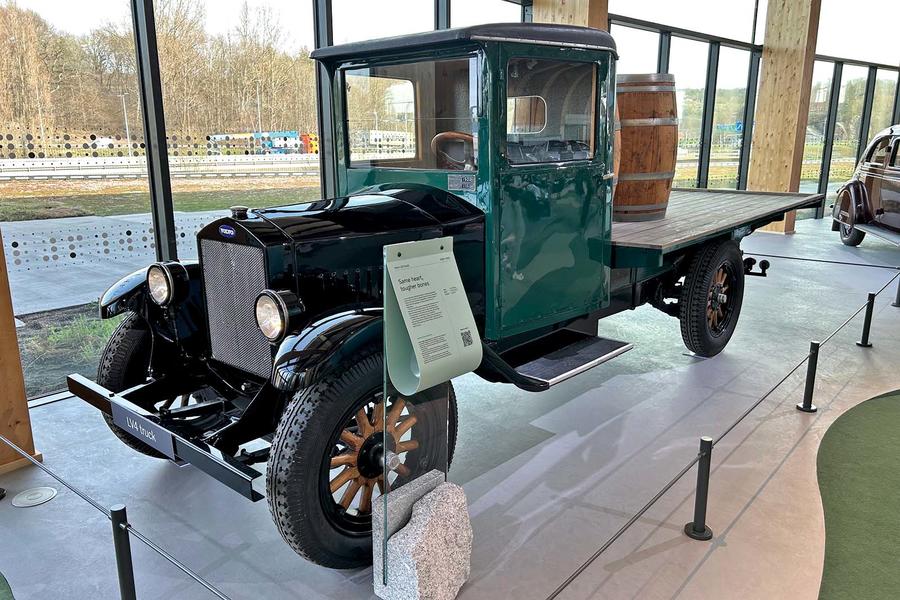
Who says platform-sharing is a modern concept? With the OV4 struggling, Volvo diversified by producing the LV4 truck – plans for which predated the car. It used the same 28bhp motor as the OV4 but with a reinforced chassis. An initial product run of 500 sold out in six months, shoring up Volvo’s future.
Volvo PV36 ‘Carioca’ (1935-1938)
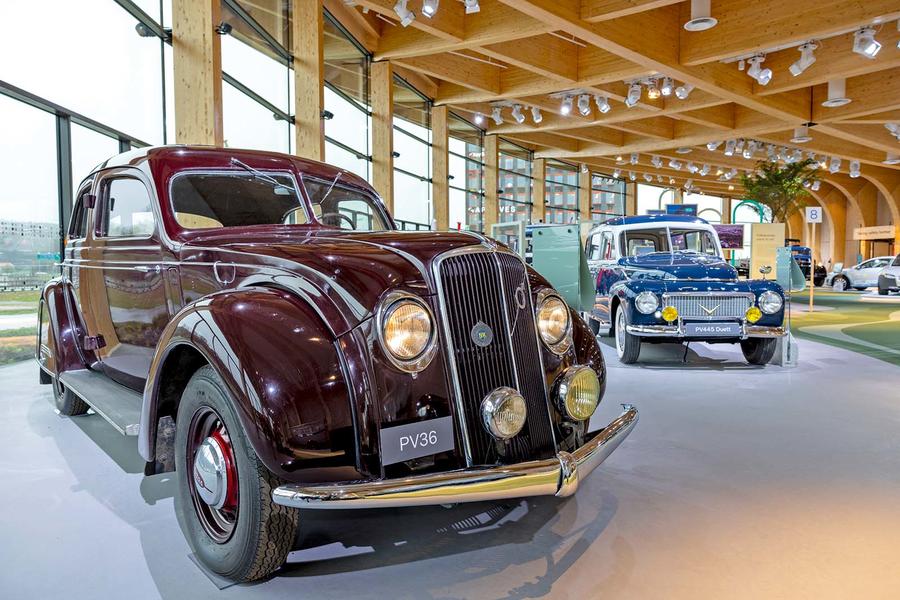
By the 1930s, Volvo still hadn’t figured out how to make cars profitable – but it could make them look good: the PV36 featured a radical streamlined body in an early push at improving efficiency. Only 500 were ever sold, sadly. Trivia: the Carioca nickname is shared with one for residents of Rio de Janeiro. It’s still unknown why it was attached to a Swedish car.
Volvo L248 (1939-1954)
Known as the Roundnose, the L248 drew inspiration from American, British and German trucks, and was the first Volvo commercial vehicle to differ significantly from the cars in terms of design. Its 99bhp diesel engine helped it become a popular hauler, and Volvo’s first sales smash.
Volvo White Bus (1945)
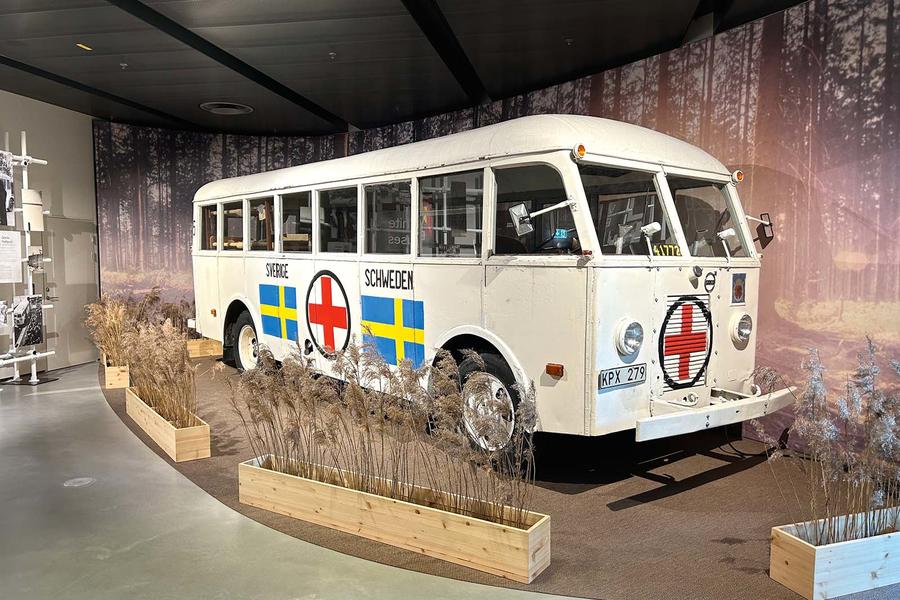
Currently located in a special exhibition section, the White Bus is one of the more sobering vehicles on display. In the closing months of World War II, the Swedish Red Cross dispatched fleets of vehicles to concentration camps to rescue prisoners and bring them to Sweden. The 75 vehicles, including this bus, made hundreds of trips, saving more than 15,000 prisoners.
Volvo Penta Aquamatic (1959-present)
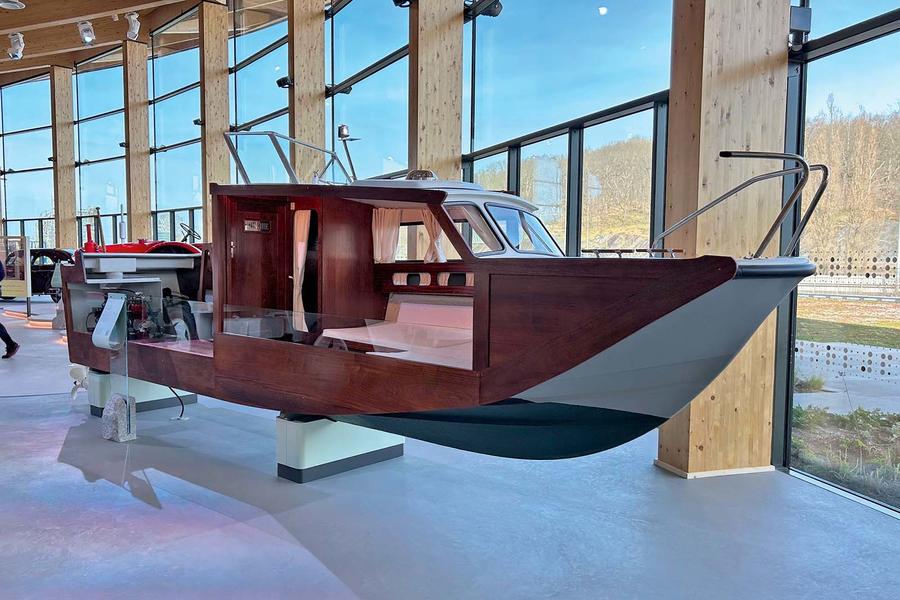
Volvo Group doesn’t just do land vehicles: in 1959, it introduced the pioneering Penta Aquamatic boat engine, which combines the drive unit of an outboard motor with the fuel efficiency of an inboard unit. The mechanicals are inside the boat, but the propeller is placed outboard. It’s a hugely significant machine for boating history.
Volvo PV445 Duett (1953-1960)

The fortunes of Volvo’s car division transformed with the PV444, developed in the final years of World War II as a smaller, cheaper, more fuel-efficient vehicle. It was the first profitable Volvo car, and the chassis would be used for a range of models, the most significant of which is this PV445 Duett – the first Volvo estate.
Volvo P1800 S (1961-1972)
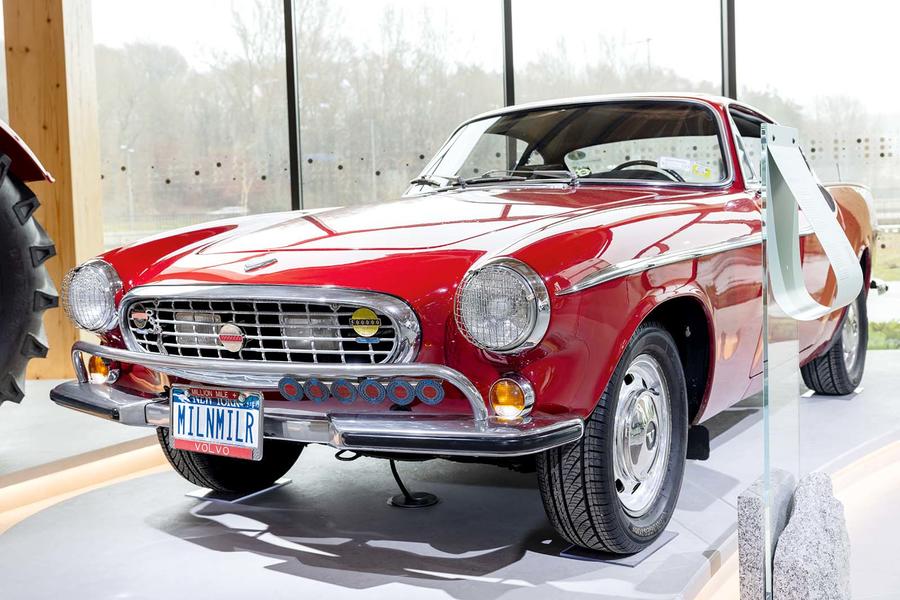
The 1800 S sports car was intended to boost Volvo’s brand internationally, with the design by student Pelle Petterson, who later went on to style lawnmowers and golf clubs. This car was bought by American teacher Irv Gordon in 1966 and he subsequently clocked up more than three million miles in it, setting a world record in 2013.
Volvo Experimental Safety Car (1972)
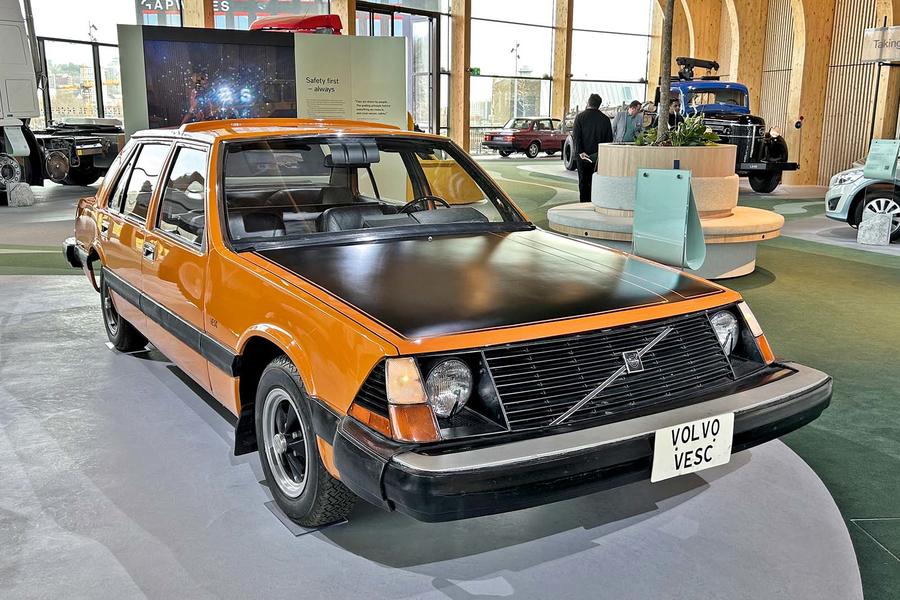
The VESC was unveiled at Geneva in 1972, and was a test lab for safety kit that would later become common on cars, including airbags, a rear-view camera, anti-lock brakes and an impactabsorbing bumper. The colour was chosen for visibility, while there is also an eyesight line stripe on the bonnet designed to improve depth perception.
Volvo Electric Prototype (1976)
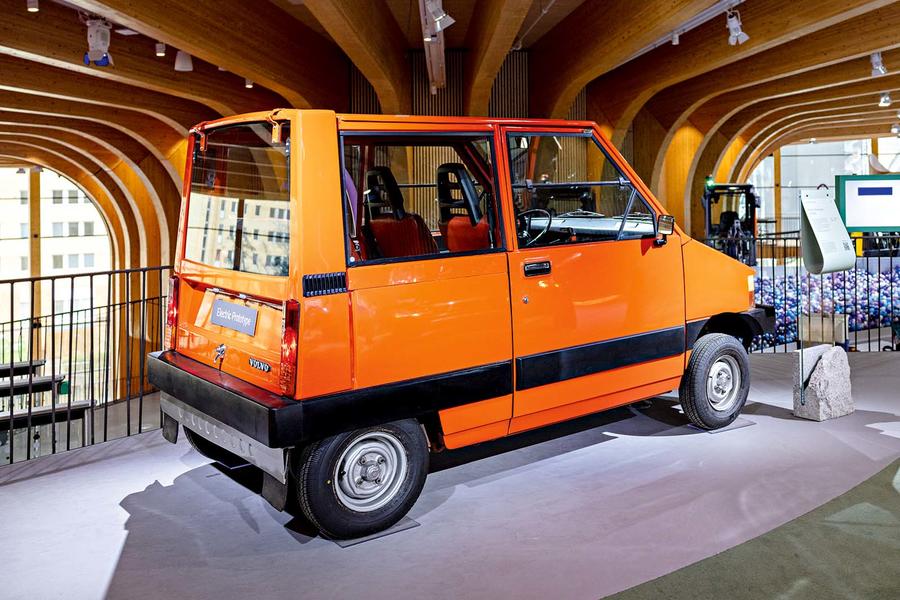
A radical electric Volvo with a tiny footprint? Consider this a distant predecessor of the EX30. Actually, this was a project part-funded by Swedish phone firm Televerket to devise an emission-free mail delivery van (a four-seat car version was also developed). It is just 2680mm long, although it’s weighed down by 300kg of batteries and offers just 13bhp. Another issue: the battery took 10 hours to charge and had a range of 30 miles.
Volvo 850 (1991-1996)
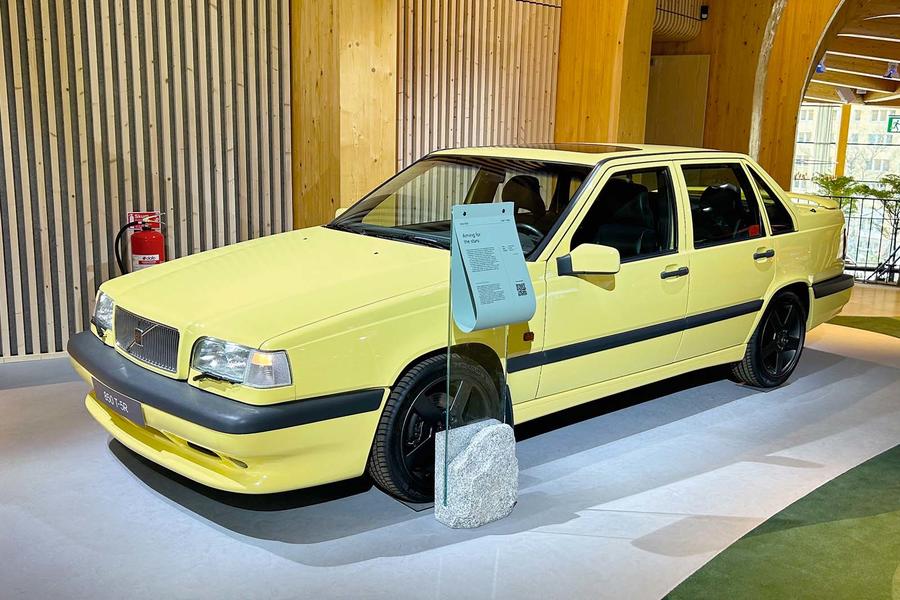
British Touring Car Championship fans of a certain vintage will go weak at the knees at the sight of an 850 T-5R, the limited-edition range-topper of a hugely significant model. The 850 was a radical new concept, with front-wheel drive and a transverse five-cylinder engine. Its development set a Swedish record for investment in an industrial product.
Volvo Environmental Concept Car (1992)
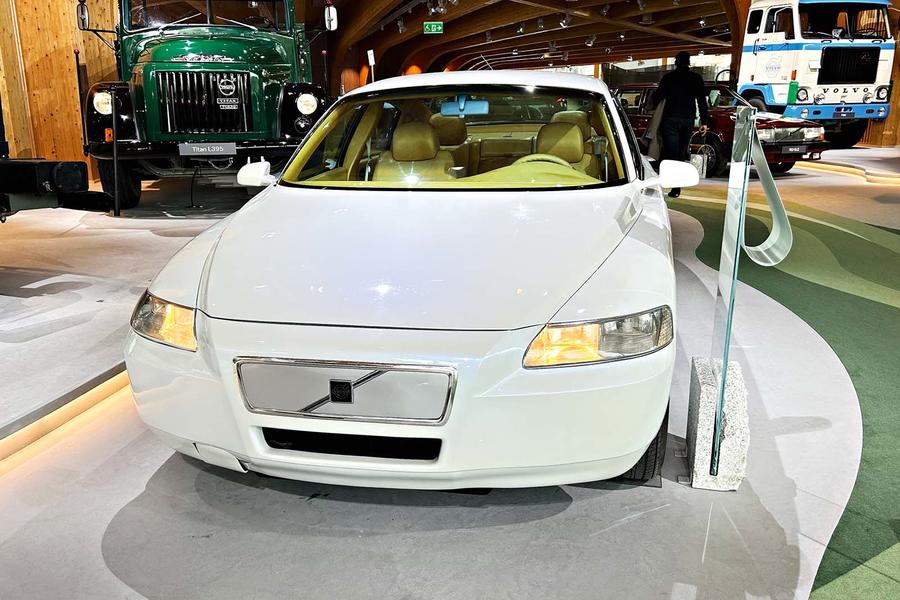
Another boundary-pushing concept, the ECC both previewed the future S80 and showcased some new technology. It was made from recycled materials, including an aluminium chassis and a cork interior, and twinned an electric motor with a gas turbine generator.
Volvo 760 GLE (1982-1990)
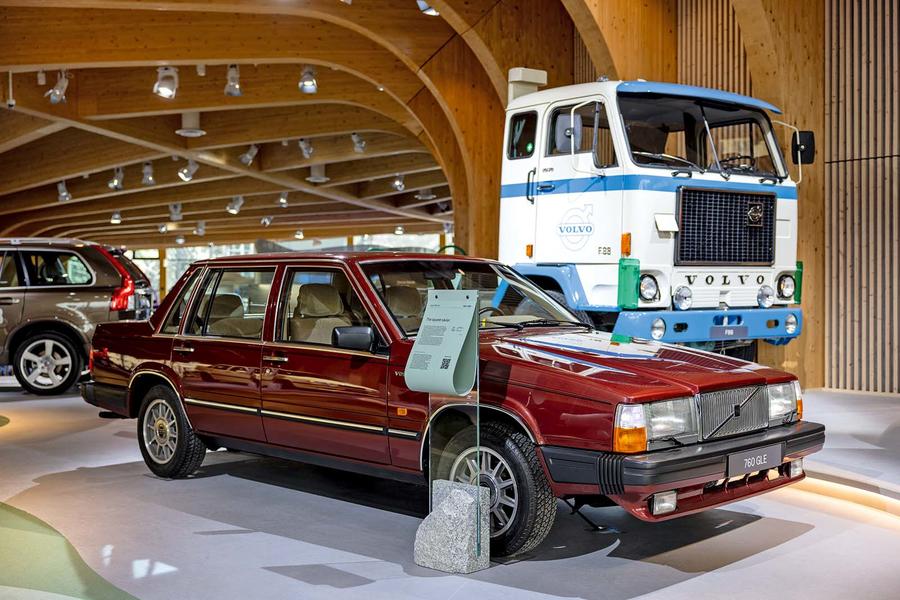
Hit hard by the 1970s oil crisis, Volvo discussed a merger with Saab or even selling a stake to the Norwegian government. Instead it decided to focus on developing a new model with the working name 1155 (five minutes to midnight). The resulting 760 is lighter than the 240 and more fuel efficient, and its boxy styling made it a huge hit.
Source: Autocar
